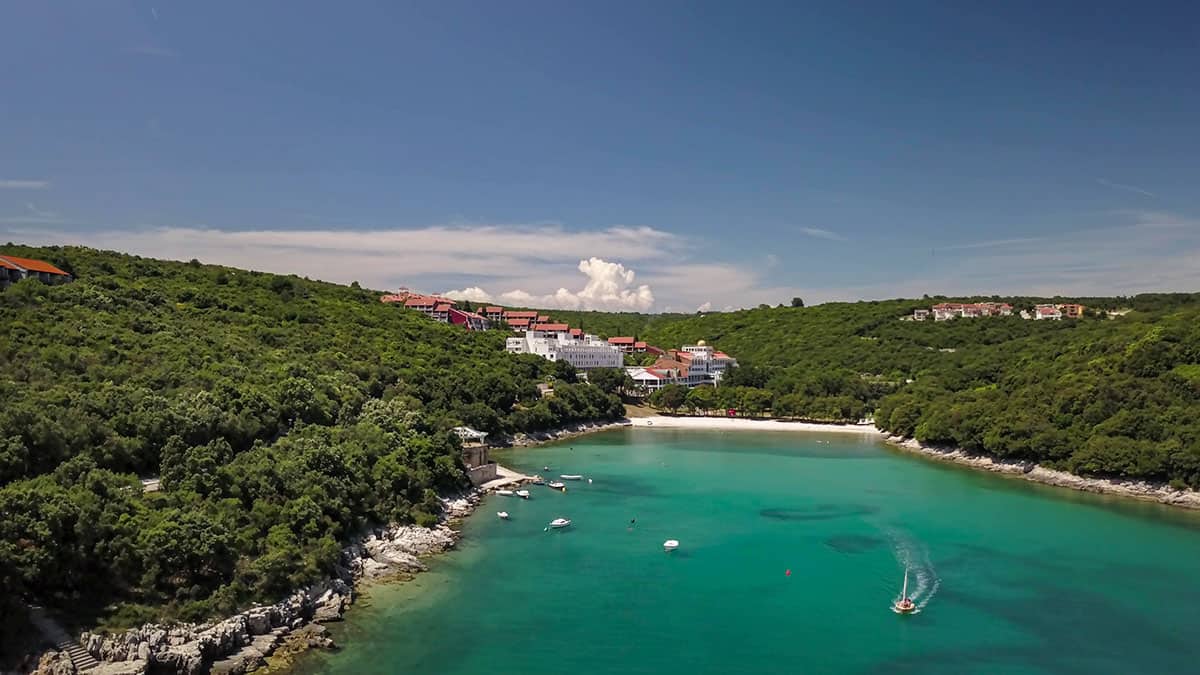Many people choose to rent a car during their vacation and embark on a Croatia road trip. , but unless you are planning to visit Istria, it’s not necessary, and even in Istria, you can visit many of the significant points of interest with buses or tours so consider that when planning your Croatia itinerary. During our 2 weeks in Croatia, we chose to mix and match, so we started our trip without a car and then rented a car from Split. Our Croatia road trip included the Istrian peninsula, Plitvice and Zagreb.
By Car: If you are planning on a 14-day Croatian road trip, you can plan a very flexible itinerary but make sure to get accommodation with parking. Generally speaking, the conditions of the roads in Croatia are pretty good, making driving in Croatia very easy. You can choose to take the highway which might include tolls (the toll is calculated by the end destination) or the slower coastal roads. In Istria, the roads were very narrow at times but generally speaking, we didn’t have any issues.
Before starting your 2-week Croatia trip, make sure to download the Croatian Auto Club app which provides information about traffic and road conditions. Also, make sure to have GPS or Waze to help you navigate. Don’t forget to review the driving rules and speed limit before hitting the road. Check out this document with a summary of rules and regulations for driving in Croatia.
Insider tip: since in some places you might have no signal, it’s always a good idea to download a map of the area from Google Maps or buy a regular map before starting your 2-week Croatian road trip.
By Bus: If you don’t want to rent a car, no worries, You can plan your Croatia itinerary Croatia’s public bus transportation which is pretty comfortable and affordable. The bus system in Croatia is pretty good, and most time it’s preferable to the train. During the high season, it’s always better to book your tickets in advance.
By Ferry: Several companies operate ferries in Croatia. You can catch a ferry between major cities along the coast and the islands of course. Before planning your Croatia itinerary don’t forget to check the routes, prices, the ferry map and tips about ferries in Croatia
By Plane: In addition to the five international airports, there are several domestic ones. The problem is sometimes the flights are quite limited (or involve a detour) especially from/to less popular cities, meaning it might be better to take a ferry or a bus. However, if you start planning your Croatia itinerary early enough, you might find a suitable flight.


Croatia is so high on my list this will come in super useful thanks!
Our pleasure Kariss! You should definitely try and visit it ASAP 🙂
I LOVE Croatia! I’ve only been to Dubrovnik but definitely need to get back and explore more. Saving this itinerary for my next visit. Thank you!
Dubrovnik is stunning but there are so many more beautiful places to visit in Croatia! Glad we could help!
There’s definitly so much to do in Crotia, even two weeks doesn’t seem enough. It’s certainly on my list of places to visit soon! xo
We tried to build our Croatia itinerary so you can extend it if you wish. Yes, Croatia is full of wonders and in 2 weeks in Croatia, you can’t see everything!
This guide is FANTASTIC! I really appreciate how impressively comprehensive and helpful it was. Not only that, but your photos made me want to book my flight straightaway. Well done!
Thank you so much Gwen! So glad you like it! We really tried writing a Croatia travel guide we’d be happy to follow that provides loads of information to help you plan your own perfect Croatia itinerary 🙂
This would be such an incredible trip! I’ve been to Split, Hvar, Istria and Zagreb, but still need to see Dubrovnik and the lakes!! Croatia is such a beautiful country, planning to get there with croatia yacht charter.
Thanks for sharing your tips!
Thanks Veronica, you are going to have a blast! Croatia is wonderful, enjoy your trip!
Thank you so much for sharing this. I want to ask you about Lošinj island. Is it a good place to go with kids? We prefer calm rest in less crowded places but not to be completely remote from the civilization 🙂
Hey Robert, glad you like this article. We actually haven’t been to Lošinj island ourselves so it’s hard for us to give you advice regarding that specific place. Croatia has some wonderful hidden gems if you want to avoid the crowd so I am sure you won’t have a problem finding such a place. Have fun!